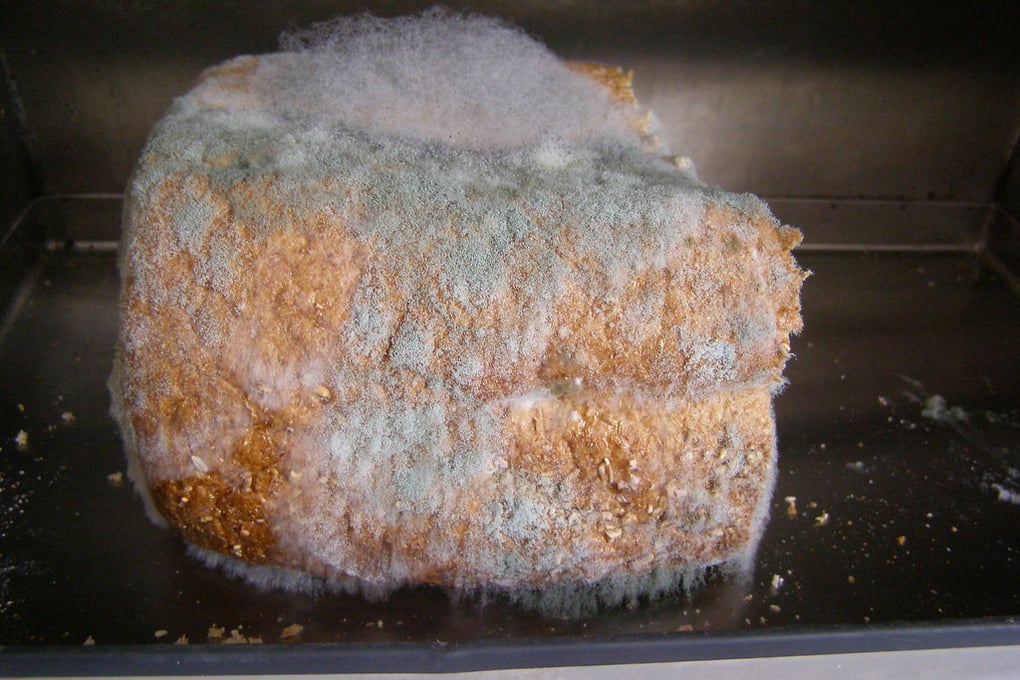There are very few feelings more frustrating than going to make a nice sandwich and finding a sage-green clot of mold on the end of your bread. Or plastered to the side of your cheddar. Or creeping up the plastic of your goat cheese. Or nibbling at the bottom of a bell pepper you sort of forgot you had.
It seems simple enough: just cut the moldy piece off, or throw it away. But is that really safe to do?
The short answer? Well, it’s kind of complicated.
If your bread is moldy…

Say goodbye. Mold has long, threadlike roots that can infiltrate airy baked goods like bread, muffins, and pastries, so even if you throw away the slice with the spot on it, there’s no telling how much microscopic mold made its way through the rest of the food item.
If you really think it’s okay and there’s just a teeny tiny spot of mold, make sure to cut away not only that slice but a good chunk around it. Even so, be very very careful to check the rest of the loaf for other mold spots.
If your cheddar is moldy…

Praise Cheesus, you’re okay. Hard cheeses like cheddar and parmesan aren’t porous the way bread and baked goods are, so those tendrils of bacteria can’t force their way to the middle of your chunk of cheese. Make sure to cut off the visibly moldy portion of your cheese block, check for any other problem areas, and eat the rest of the orange goodness you see.
If your goat cheese or shredded cheese is moldy…

You’re done, son. The U.S.D.A says foods like goat cheese and shredded cheese with high moisture content can be contaminated below the outer surface. If there’s mold in your bag of shredded mozz, you have to pitch the whole thing. Ditto goes for your log of creamy chèvre.
This is why the freezer is your best friend: if there’s a massive sale on more perishable cheeses like this, portion things out so you have some for now and some for later. That way, you don’t end up wasting food.
If your peppers or carrots are moldy…

You can still save them, as long as you trim the mold (are you seeing a pattern here)? Foods like cabbage, carrots, peppers, potatoes and apples all fall under this category.
If you have a big, watery bag of baby carrots that’s starting to smell weird though, pitch it. Mold and bacteria love moisture and unless you want to pick through every carrot one-by-one, you’re probably better off pitching the whole bag.
If your tomatoes or peaches are moldy…

Okay, the USDA says to throw them away because soft-fleshed fruits and vegetables are more susceptible to mold penetration (like the bread), but I personally have cut away mold on peaches and tomatoes for 25 years and have lived to tell the tale. So I guess eat at your own risk. Or follow the rules and do as the USDA says.
Keep this list handy the next time you see any mold in your dorm fridge. Not all food needs to be pitched, and you can save money by knowing these tips.


